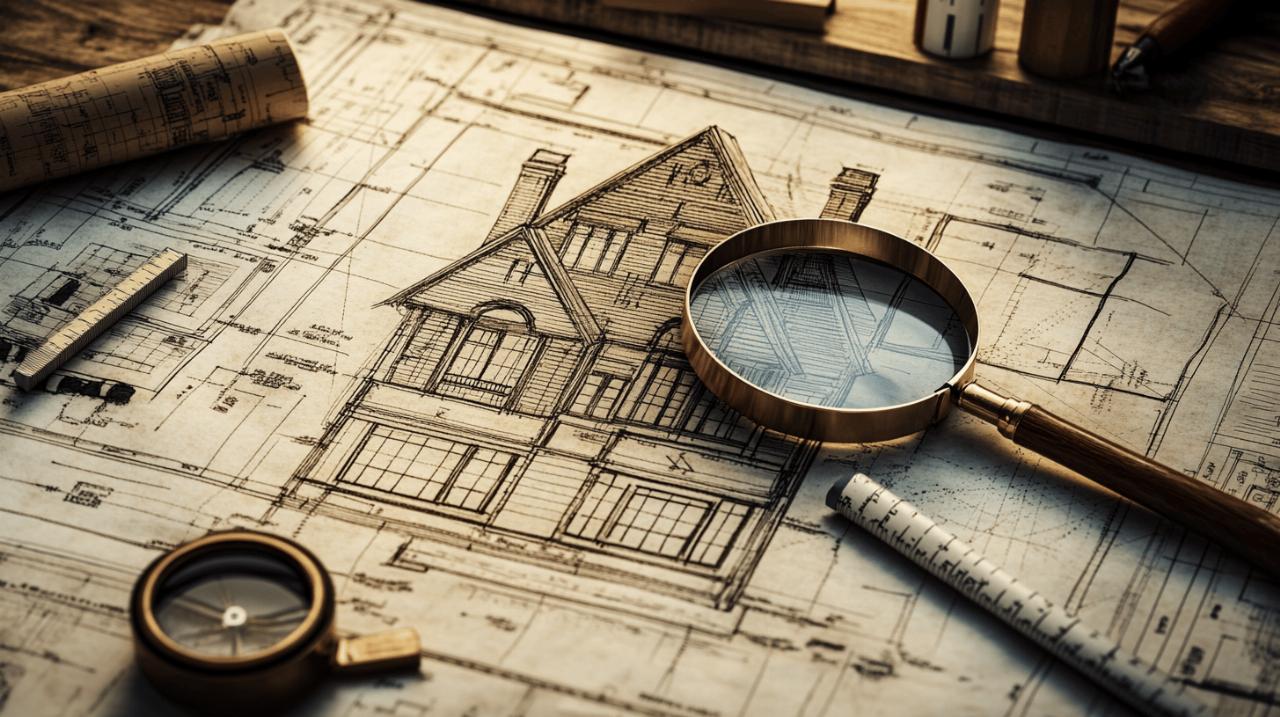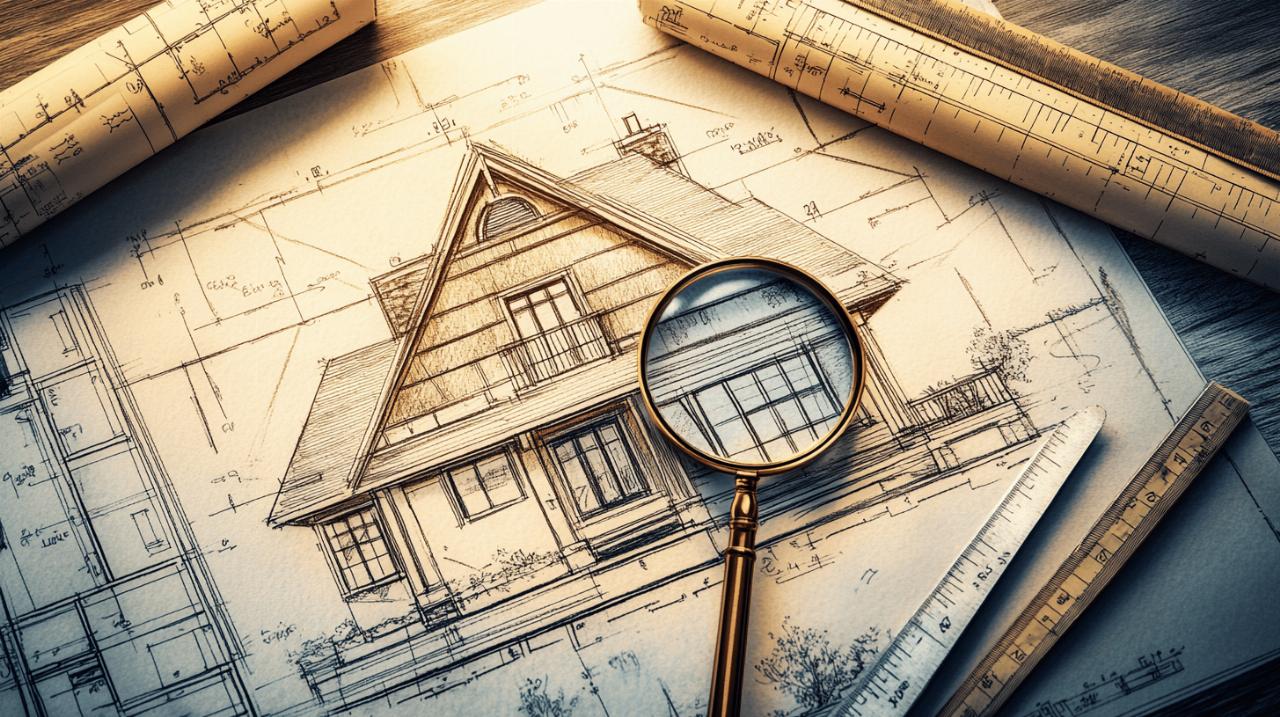When you're trying to determine the age of a house, there are several reliable methods to explore. Understanding when your property was built provides not only historical context but can also inform renovation decisions and potentially affect its value. This article will walk you through various approaches to uncovering your home's birth date, from official paperwork to physical clues.
Legal documentation: your first port of call
The most straightforward way to determine your house's age often lies in the legal documentation associated with the property. These official papers can provide definitive evidence of when construction took place.
Digging through property deeds
Your property's deeds are a treasure trove of information. Have a butcher's at these legal documents as they frequently contain the exact construction date or at least the date when the property was first registered. Even if the original deeds are unavailable, copies are typically kept by your mortgage provider, solicitor, or the Land Registry. Look for dates of land transfer or the first mortgage on the property, as these can give you a good indication of when the house was built.
Exploring local council archives
Local authorities maintain extensive records of developments within their jurisdiction. Pop down to your local council offices and enquire about historical building records. Planning permissions, building regulations approvals, and tax records can all shed light on when your property first appeared. Some councils have digitised these archives, making them searchable online, while others may require an in-person visit. These records often contain detailed information about construction dates, especially for properties built in the 20th century onwards.
Official records and professional resources
Beyond the immediate legal paperwork, several other official sources can help pinpoint your home's age with considerable accuracy.
Investigating cadastral documentation
Cadastral records provide comprehensive information about property boundaries, ownership, and often age. Have a peek at these documents, which are particularly valuable if your property is located in continental Europe where cadastral systems are widely used. In the UK, the equivalent might be found in land tax assessments or the National Farm Survey. These records meticulously document when structures first appeared on a plot of land, giving you valuable clues about construction dates.
Consulting historical databases
The digital age has made historical research much more accessible. Have a go at searching online databases such as historic map collections, census records, or dedicated architectural archives. Resources like the National Archives, British History Online, or even commercial genealogy websites can reveal when your property first appeared in official records. Historic maps are particularly useful, as comparing maps from different periods can show when your house was first depicted.
Community knowledge and local resources
Sometimes the most valuable information comes not from official sources but from the collective memory and expertise of those around you.
Reaching out to local history societies
Local history buffs often possess detailed knowledge about area properties that may not be documented elsewhere. Consider giving some local history societies a shout, as they might have researched properties in your neighbourhood or can direct you to relevant resources. These organisations frequently maintain their own archives of photographs, newspaper clippings, and oral histories that could contain references to your home's construction.
Gathering Information from Neighbours and Area Residents
Never underestimate the value of local knowledge. Longstanding residents may have witnessed your house being built or might remember stories about its origins. Engaging with your community could yield surprising insights about your property's history. Elderly neighbours, in particular, might recall details about when certain developments occurred in the area, including the construction of your home.
Physical evidence: reading your home's story
When documentation falls short, the physical characteristics of your home can provide valuable clues about its age.
Identifying architectural features and building styles
Architectural styles evolved over time, making them reliable indicators of a property's age. Victorian homes (1837-1901) typically feature ornate decorative details, while Edwardian properties (1901-1910) often have wider frontages and simpler designs. Post-war homes from the 1950s and 60s tend to be more functional with less embellishment. By researching architectural periods and comparing them to your home's features, you can narrow down the construction timeframe significantly.
Analysing construction materials and techniques
The building materials and techniques used in your home can be telling signs of its age. Brick, a common and durable building material, has changed in manufacturing methods over centuries. Examining brick sizes, colours, and textures can provide substantial clues. For instance, handmade bricks typically indicate older construction, while engineered smooth bricks are more modern and often used for structural purposes due to their strength and moisture resistance. Various brick bonds such as stretcher, Flemish, English, and herringbone patterns were popular during different architectural periods. Similarly, the type of mortar joints used, such as bucket handle, flush, weather struck, or recessed, can also help date a building. Even decorative elements like corbelling (where brickwork protrudes) or hit and miss brickwork can indicate specific construction periods and regional styles.
Mortar patterns: the hidden timeline in your walls
When trying to suss out the age of your home, looking at the mortar between bricks can be a proper detective job. Like reading the rings of a tree, mortar patterns tell a story about when your house was built. Different periods favoured distinct methods of brick laying and mortar application, giving us clues about a building's history without needing to rummage through dusty archives.
Decoding mortar joint styles across different eras
Mortar joints aren't just functional—they're historical markers. The bucket handle joint, with its smooth, curved finish, became popular in the mid-20th century, whilst older Georgian and Victorian properties often display weather struck joints where mortar is angled to shed rainwater. Flush joints, where mortar sits level with the brick face, were common in earlier periods but fell out of favour due to their poor weather resistance. The recessed joint, set back from the brick face, gained popularity in modern architecture for its distinctive shadowing effect.
The bond patterns offer further clues. Stretcher bond, showing only the long sides of bricks, typically suggests a post-1920s build when cavity walls became standard. Flemish bond, alternating headers and stretchers, was widely used in the 18th and 19th centuries. English bond, with alternating courses of headers and stretchers, often points to pre-18th century construction or load-bearing walls. A herringbone pattern might suggest a Tudor influence, while fancy protruding brickwork or corbelling can indicate Victorian craftsmanship.
Examining Mortar Composition and Weathering for Age Clues
The actual stuff between your bricks speaks volumes. Early mortar typically used lime rather than cement, appearing softer and more crumbly. Portland cement, which creates harder, darker mortar, didn't become widespread until the late 19th century. By the mid-20th century, cement-heavy mixes became standard, creating a grey, unyielding material that stands in stark contrast to the creamy, textured appearance of traditional lime mortar.
The bricks themselves provide supporting evidence. Handmade bricks, with their irregular shapes and sizes, suggest older construction, while uniform, machine-made bricks point to more modern building techniques. Water struck bricks with their distinctive texture were popular in certain regions and periods, while glazed bricks often indicate Victorian or Edwardian industrial buildings. Sand faced and drag faced bricks gained popularity in the 20th century, each leaving its mark on British architectural history. Engineered smooth bricks, valued for their strength and moisture resistance, typically signal newer construction, particularly in structural areas.




